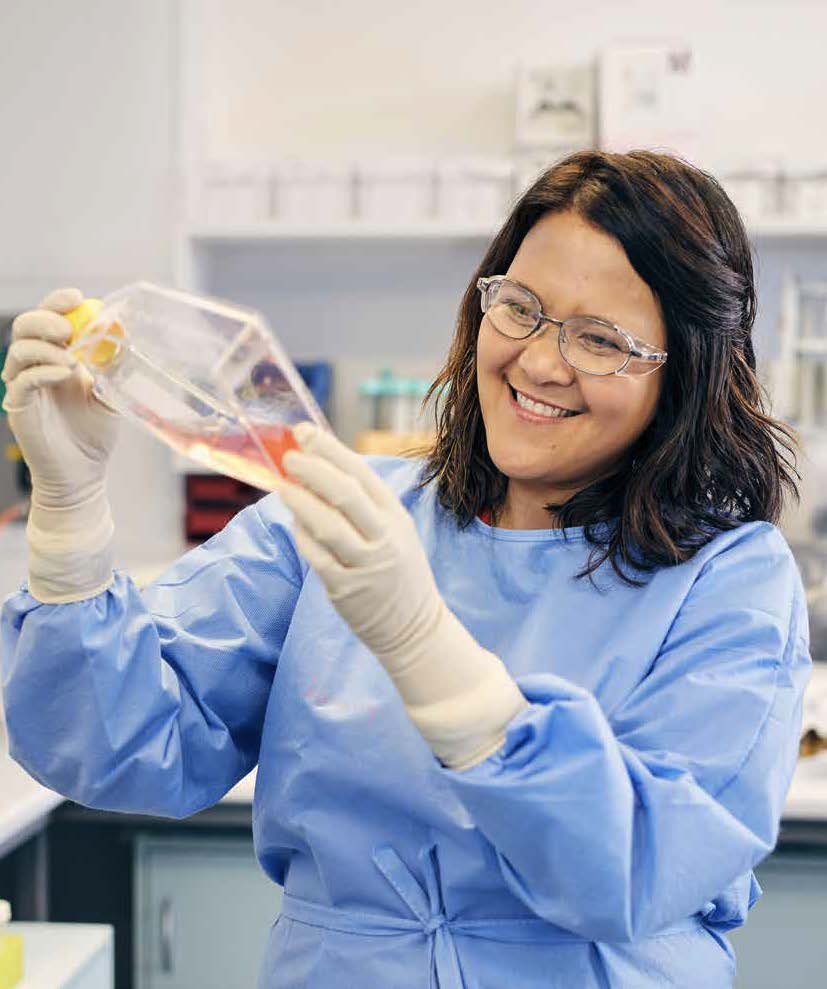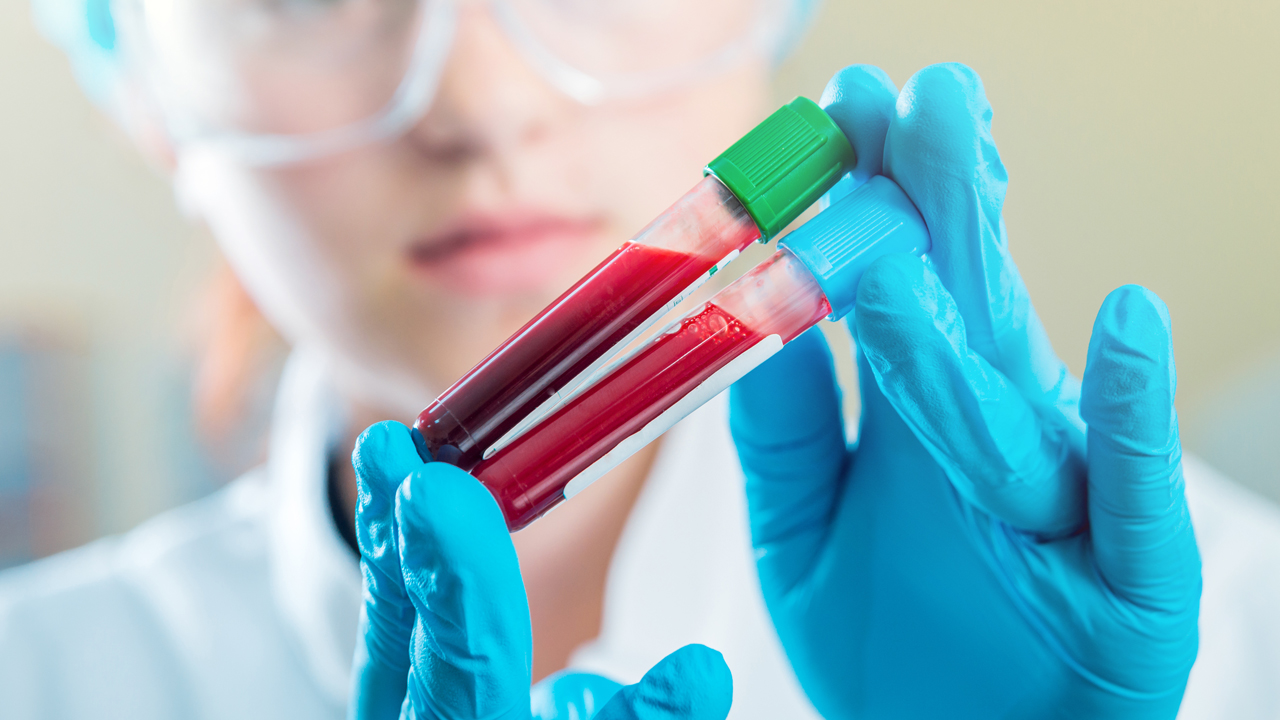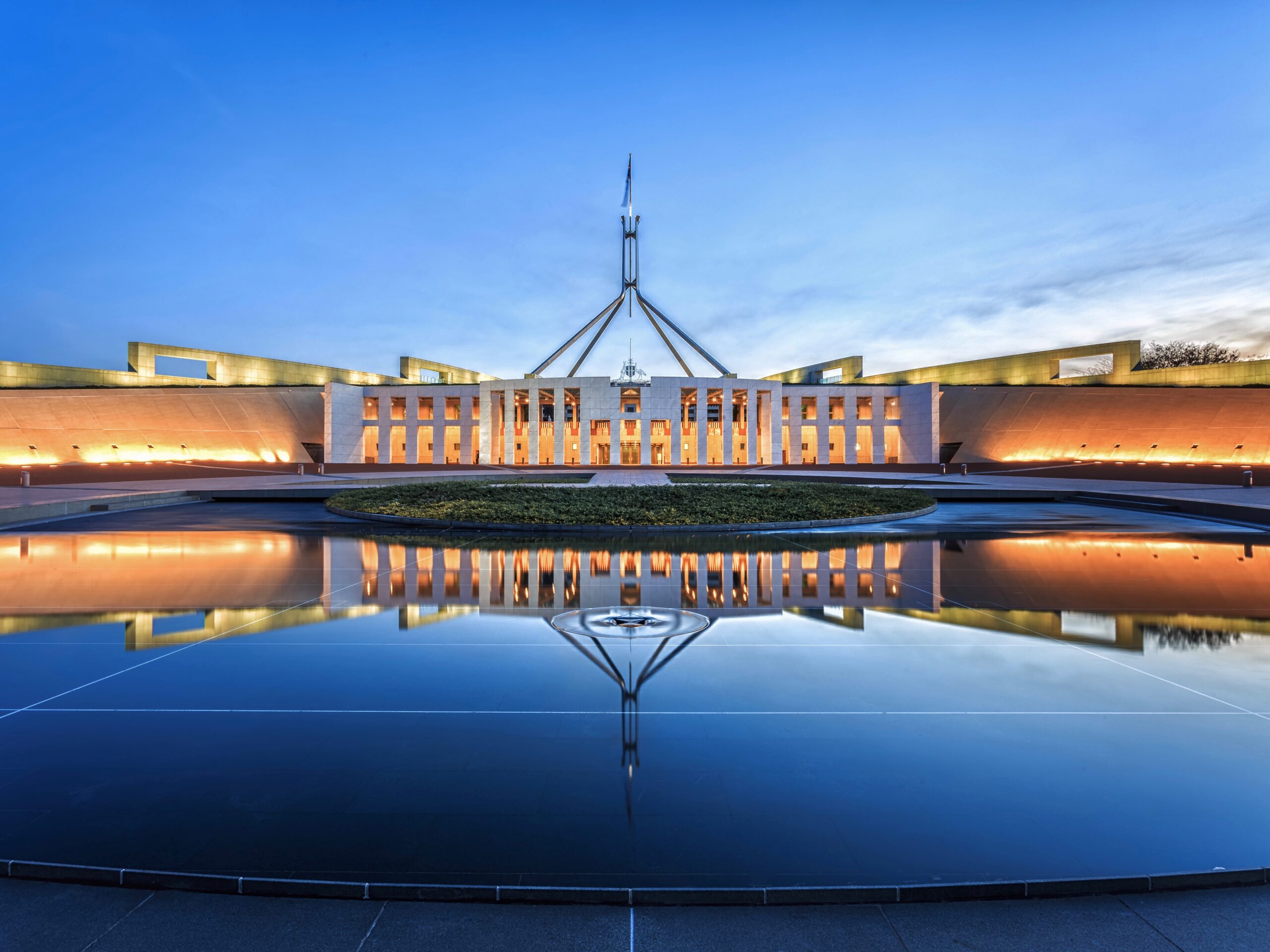Research Australia participated in consultations for the MRFF Australian Medical Research and Innovation Priorities and the MRFF Act Review. We were invited to a round table hosted by AMRAB, and provided a written submission. We recognised many positive enhancements have been suggested in the draft priorities for 2022-24. Our main concern was the lack of cohesion that links all the priorities to drive transformation across the entire health and medical research and innovation ecosystem.
RESEARCH AUSTRALIA WELCOMES MEDICAL RESEARCH COMMITMENT
Media Release 1 May 2024
RESEARCH AUSTRALIA WELCOMES MEDICAL RESEARCH COMMITMENT
The Albanese Government’s commitment to medical research today is a critical step towards underwriting the health and economic outcomes that Australians want and deserve.
Research Australia CEO Nadia Levin today welcomed the announcement, and in particular the National Strategy for Health and Medical Research which the organisation has long called for.
“Medical research is the path to a healthy Australian population and a healthy Australian economy, and today’s commitment is a critical step,” Ms Levin said.
“Health and medical research represents 23 per cent of Australian R&D activity and it needs and deserves a coordinated strategy to focus and target it.
“A strategic, national approach will guide discoveries faster to market and to the Australians who want the best possible health care – all imperative for a healthy, wealthy future.
“We look forward to working with Minister Butler to progress the National Health and Medical Research Strategy.”
Ms Levin said that the next step the Australian Government could take would be to fully utilise the funds available from the Medical Research Future Fund.
“As Australia’s peak health and medical research body, we’re pleased to see the Medical Research Future Fund supporting new missions in low survival cancers and a focus on reducing health inequities,” she said.
“The next thing the Government could do is ensure all of the available MRFF funding is flowing through to researchers.”
The Future Fund Board of Guardians determined $973 million was available for grants through the Medical Research Future Fund (MRFF) for the 2024-25 financial year, however the Federal Government has so far only budgeted for $650 million to be disbursed.
It follows 2023-24 when $870 million was available but funding actual funding was still capped at $650 million.
“The health and medical research sector has abundant capacity to immediately use every available dollar of research funding, with worthy projects and medical advances ready to be made,” Ms Levin said.
“The more we invest in medical research the better the health, policy and economic outcomes for Australia in the years to come.”
As the peak national body for health and medical research and innovation, Research Australia played a key role in the establishment of the MRFF.
Media contact: Jack Douglas 0450 115 005
Download the Media Release here.
Pre Budget Submission calls for greater investment in health and medical research and innovation
Research Australia’s Pre Budget submission to the Treasurer ahead of the 2024 Budget has made the case for increased investment in Australian health and medical research and innovation to support a healthier and more prosperous Australia.
The Australian Government’s investment in R&D is below the OECD average.
There is an additional $323 million approved for release from the MRFF in 2024-25 that the Government is not investing in medical research and innovation.
The Universities Accord process provides the ideal opportunity to increase the investment in the NHMRC, ARC and indirect research costs.
We have advocated for a greater role for the Australian Centre for Disease Control, for the greater use of Government procurement to support Australian innovation, and for the full development of the National HMR strategy and workforce strategy.
Read Research Australia’s submission here.
Getting better value from the MRFF and the NHMRC’s MREA
In May the Department of Health announced a national consultation focused on optimising the government’s funding arrangements for health and medical research by improving strategic alignment and coordination between the MRFF and the NHMRC’s Medical Research Endowment Account. Research Australia welcomes this initiative and the commitment that this reform will be undertaken within the broader context of a new National Health and Medical Research Strategy, a long-term campaign by Research Australia (and others).
Following consultation with our membership, Research Australia has made a submission in response to the Discussion paper.
Unified governance of the MRFF and the MREA presents a real opportunity to ensure the MRFF Priorities are developed with greater regard for what the MREA is funding, thereby ensuring better differentiation and complimentarily of the two funds. There is also an opportunity to address equity and health disparities through more coordinated and streamlined funding.
Research Australia has largely supported the proposed Model 2 as a way of improving coordination while recognising the distinct objectives and purposes of the two funds. Establishing one administrative funding body provides the opportunity for successful research projects to graduate more seamlessly from one funding program to the next including from an NHMRC program to an MRFF program. T
This new model must be delivered in such a way that preserves the MRFF’s funding for medical innovation, and that input from outside academia and medical research institutes is retained. Stakeholders from commercialisation, finance, and industry have a meaningful advisory role in both the priority setting and funding processes of the MRFF. Basic research can be funded by the NHMRC in a way that will ultimately support MRFF Priority areas if the two funds are better aligned.
Finally, a Workforce Plan must form part of the broader national HMR Strategy. This Workforce Plan should seek to address the challenges faced by early and mid-career health and medical researchers and identify careers/jobs critical to a future economy underpinned by a thriving innovation and modern manufacturing sector.
Consultation on changes to align the MRFF and MREA are ongoing and Research Australia is continuing to liaise with the Government on the sector’s behalf on these important reforms. If you would like to get involved please contact Research Australia’s General Manager Lucy Clynes at lucy.clynes@researchaustrlaia.,org or Head of Policy Greg Mullins at greg.mullins@researchaustralia.org
Research Australia’s submission is available here.
New MRFF Strategy 2021-2026
Research Australia welcomes the release of the Australian Medical Research and Innovation Strategy 2021-2026, which sets clear objectives to support and foster Australian HMR to meet future health needs. This is a definitive step towards tackling the challenges and opportunities presented by the pandemic so that we emerge with a stronger health and medical research sector, capable of delivering better health and economic prosperity for Australians. Research Australia’s consultation Health and Medical Research – Australia can do better! seeks your input on how we do this. Visit our consultation hub and let us know your views on the key reform areas here.
For more information about the MRFF Strategy and Priorities, visit our webpage here.
A new Strategy for the MRFF
Research Australia’s submission in response to the consultation on the new MRFF Strategy 2021-26 and related Priorities has proposed several critical changes:
-
- It has emphasised the need for the Strategy to provide more guidance about how the MRFF should be invested.
- Greater engagement with health systems in the states and territories is essential, as is a focus on preventive health.
- The Strategy needs to address how evidence arising from the research and innovation funded by the MRFF is embedded into the health system.
- The new MRFF strategy should identify and address gaps in skills and capability that prevent the implementation of evidence into practice into our health system.
- Infrastructure funding priorities for the MRFF should be developed in consultation with Department of Education Skills and Employment and state and territory governments, to ensure research infrastructure is funded where needed and complements other programs and initiatives.
- The Strategy should propose a mechanism for better differentiating the funding programs of the NHMRC and the MRFF. The Strategy should also propose the development of a national HMR strategy to better coordinate funding for HMR from all sources, in much the same way the first strategy proposed a whole of government approach to addressing funding for the full cost of research.
- COVID-19 has highlighted the particular difficulties facing early- and mid-career researchers. The Strategy could commit the MRFF to considering how the design of the MRFF’s funding programs could better support EMCRs.
- The effects of COVID-19 in our region provide the opportunity for the strategy to consider how Australia can use its research capability to support our neighbours’ response to and recovery from COVID-19, as an exemplar for broader engagement on regional health issues.
Read Research Australia’s submission here.
The new MRFF Strategy, for the period from 2021-2026 was subsequently published on 2 November. It is available here. More information about the MRFF Strategies and Priorities is available on our website here.
Changes to MRFF investments and disbursements
The Investment Funds Legislation Amendment Bill 2021 will:
-
- change the way the MRFF is invested,
- allow the annual disbursements from the MRFF to be set for a period of up to five years, and
- change the period for the MRFF Strategy and Priorities to six years and 3 years respectively (currently 5years and 2 years.)
In its submission to the The Senate Finance and Public Administration Legislation Committee Inquiry, Research Australia has welcomed the changes, which have the potential to increase the funds available from the MRFF to fund research and innovation and provide greater stability. Research Australia has urged the MRFF Act be amended to make it explicit that the capital value of the MRFF is to be maintained in the long term.
Research Australia’s submission is available here.
Research Australia monitoring important new MRFF legislation
The Government introduced the Investment Funds Legislation Amendment Bill 2021 into Parliament on 25 August. If passed, it will, among other things, fix the amount of funding disbursed from the MRFF for five years at $650 million per annum. At the end of the five-year period, the investment performance of the MRFF will be assessed to determine if sufficient earnings have accumulated over the period to raise the annual rate of disbursement. This five-year review period will become a permanent feature of the MRFF.
The MRFF 10-year Investment Plan introduced by the Government in the 2019 Budget has allocated roughly $550 million per annum over the period to 2027-28. The proposed legislative change will allow these commitments to be met, while providing approximately $100 million per annum for new commitments and programs.
This change is about reducing the volatility in MRFF disbursements that arises because of the link to annual investment returns. This volatility caused the Government to tip in $175 million to MRFF disbursements in December last year to keep the MRFF 10-year Plan on track.
Research Australia will be closely monitoring performance of the MRFF and continuing to advocate for fund growth to mirror the growth of the health and medical research sector. While fixing the disbursements, as is proposed by the legislation, provides certainty as to how much we can expect to see disbursed from the MRFF every year, we are seeking clarity as to whether this amount will be indexed. At a bare minimum, the MRFF should keep pace with inflation. Research Australia members remain concerned that other key funding streams like the ARC and NHMRC are not indexed to CPI, meaning they don’t keep pace with inflation and, in real terms, are funds in decline.
The Senate Finance and Public Administration Legislation Committee is undertaking an Inquiry into the Bill and is due to report back to the Senate by 14 October.
For further information or to contribute to Research Australia’s submission, please contact Lucy Clynes, General Manager at lucy.clynes@researchaustralia.org
Improving approval processes for new drugs and medical technologies
Research Australia has responded to the Parliamentary Inquiry into the Approval Processes for New Drugs and Medical Technologies.
Opportunities exist to change our approval processes to benefit patients and better support research and development in Australia. Faster and more effective approval processes mean new medicines and technologies reach patients faster. Improving the environment for clinical trials enables Australian patients to benefit from the latest medicines and technologies developed overseas while also helping Australian health and medical research to flourish in a competitive and lucrative world market. Research Australia’s submission identifies some of these opportunities with the twin objectives of improving Australians’ health and prosperity.
Research Australia’s submission is available here.
The Committee is expected to hold public hearings in early 2021.
Research Australia proposes new MRFF Priorities
Research Australia has a made a comprehensive submission to the consultation on the new MRFF Priorities 2018-2020.
Working with our broad membership, Research Australia’s approach was to start with the Strategic Platforms and examine every Priority and all the existing and proposed funding programs. We looked at how well they were aligned, where the gaps were, and what wasn’t working. Research Australia gratefully acknowledges the contribution made by our members through discussions and the exchange of ideas and proposals.
Research Australia proposes that four Priorities be retained in their current form and that a further seven be retained but amended. We also propose five existing Priorities be discontinued and six new Priorities created. Research Australia’s response to the consultation is available here.
With the consultation period now completed, the next stage rests with the MRFF Advisory Board which is responsible for developing and issuing the next Priorities. We wish the Board well with this important task and look forward to seeing the new MRFF Priorities towards the end of 2018.









